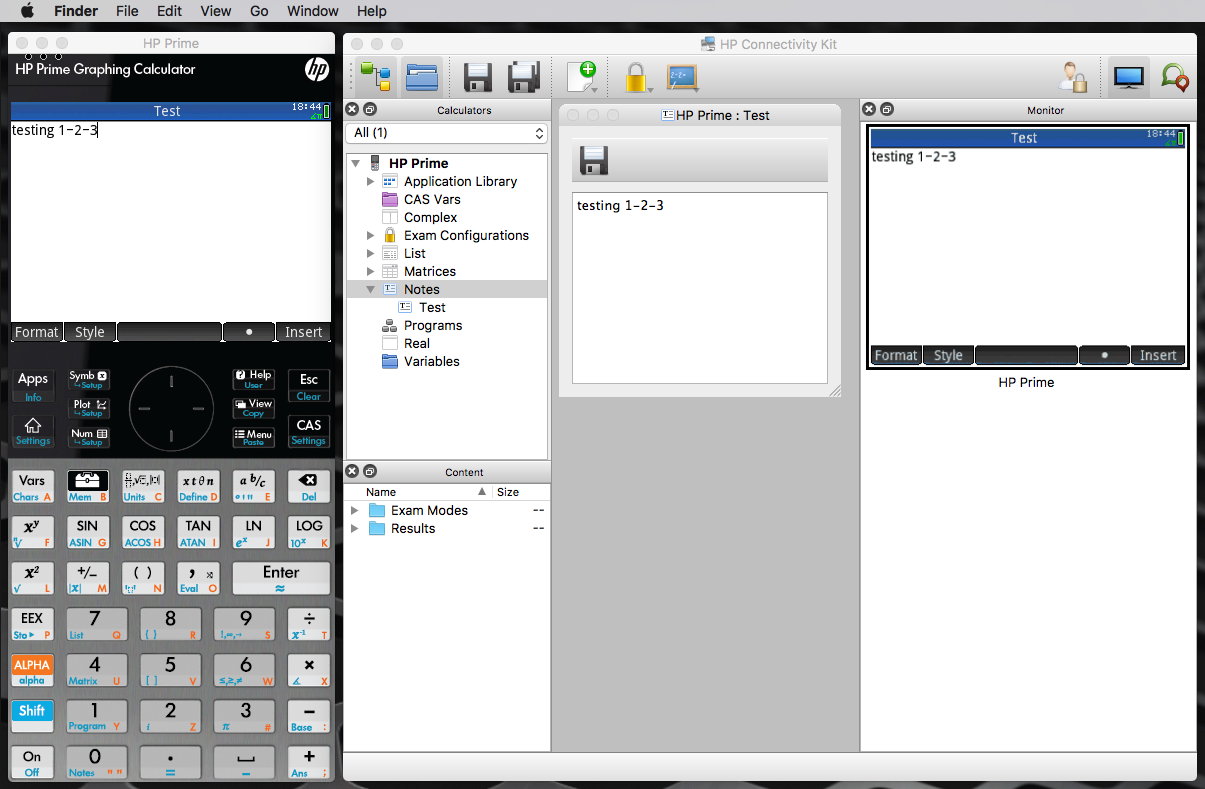

HP 41 EMULATOR FOR MAC PLUS
Battery life and CPU speed is of course drastically better, although the memory remains the same (319 registers plus the stack, or just a touch over two hundred bytes), and at present there’s no way to mount external ROM modules, either as physical hardware or as memory dumps. The DM41 is a faithful emulator of the original HP-41CX microcode, running on a low-power ARM processor, with a good mechanical keyboard and dot-matrix LCD display.
HP 41 EMULATOR FOR MAC SERIES
I would like, instead, to capture a few specific things about the DM-41 series (I will refer to both the DM41 and the DM41L as the DM41, because the features I’m discussing apply to both device) that are available from various forums and the Swiss Micros site, but necessarily in one place, both for future users and for future me. More on that in a future blog post, perhaps. There is also a lot to reflect on when considering the culture of information sharing about calculators and calculation programs in the 1980’s and 1990’s, and blogs and enthusiast sites today about things like iOS and Android, or any programming language, especially the small, up-and-coming ones. There remains an avid user community, and almost all of the original programs that were published in one way or another can be found on the internet. I won’t say much about the HP-41 series of devices, but instead provide links to and. But I had heard good things, and also wanted to support the effort overall - both by encouraging the good engineering of low-volume products for enthusiasts, and in the hopes that by supporting Michael Steinmann and his company that we’ll see other interesting things (the work on the DM42 is an excellent example of this). It was a bit of an impulse purchase I have a working HP-41CX I use occasionally, but don’t take it from the house because I am worried about breaking it or having it stolen (my first one was stolen, in 1988). I have just acquired a Swiss Micros DM41, their small replica of a HP-41CX calculator. I think because of my upbringing and training, there is something about the cognitive process of using a physical calculator - much as there is in writing with pen and paper instead of typing, a subject much discussed elsewhere. It is still faster for me to do some things with a calculator than add formulas to a sheet as I’m analyzing data once I know what the data is telling me through this exploration, I can then put together the formulas and provide a reasonable presentation. I won’t add much here, except that though the bulk of my computation needs now are either so simple that I can do them in my head or on a slide rule (which, yes, I have one on my desk at work) or require real computation to set up, there is still a place for me to use a calculator. I think exposure to this at an early age definitely has influenced my interest, desire, and recognition of fine design in modern computing products, especially mechanical interactions. Much has been written about the fine craftsmanship and quality of these early devices - both their physical and electronic design, and the decisions made about their man-machine interfaces. I’ve played with others, and i41CX is what I run on all my iOS devices.
HP 41 EMULATOR FOR MAC PORTABLE
In recent years, I have used various HP emulators on the portable devices I use for over ten years I keep falling back to Free42, because it runs almost everywhere in one port or another. I later graduated to an HP-28S and then an HP-48SX. I had a microcomputer shortly after encountering the HP-65, but learning keystroke programming greatly aided my understanding of assembly language - although I didn’t really recognize that until much later. I have a long relationship with Hewlett-Packard portable computing devices my first experiences programming were on my father’s HP-65, and later the HP-41CV his employer loaned him for his daily work.


 0 kommentar(er)
0 kommentar(er)
